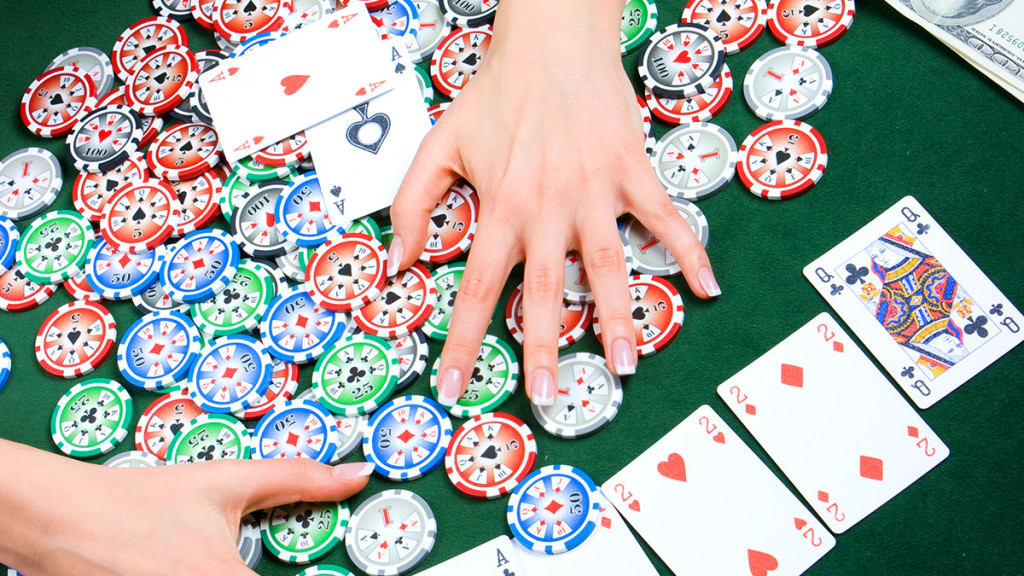
Pot Control in poker is a tricky topic that we must deal with in a very careful manner. The reason for this is that often the notion of pot control causes players to make sub-optimal decisions. If we can blame certain ideas or concepts for causing weak players to lose money at a way faster rate than they should, pot-control is one of them.
It might be for the best if we simply never think about pot control. A far more important concept to keep in the forefront of our mind is the idea of aggressively denying our opponents the ability to realise their equity. This very important poker principle runs at odds to the principle of pot-control.
Let’s define exactly what is commonly meant by the term Pot Control. We will consider situations where we definitely don’t want to employ pot control, and then situations where pot control becomes the correct principle to apply.
Pot Control – What Is It?
Very simply, pot control is the idea of either checking or making small bets, to help keep the pot at a manageable size.
If we’ve followed the tone of this article thus far, we’ve probably picked up on the fact that pot control isn’t an especially valid concept. It originated years back in the dark ages of poker when the majority of players were extremely bad.
Pot control used to appear frequently in discussions regarding poker hands, whereas now, not so much. And perhaps in another 10 years time, pot control will be one of those things that good players look back and laugh at.
When Pot Control Doesn’t Apply
Let’s look at a typical situation from 10 years ago where the average player would have used pot control. Let’s consider why it was valid then, and also why it’s so terrible now.
6 handed, NLHE
UTG (100bb)
MP (100bb)
CO (100bb)
BTN (100bb) Hero
SB (100bb)
BB (100bb)
Hero is dealt 

UTG folds. MP folds. CO folds. Hero opens to 3bb. SB folds. BB calls.
Flop (6.5bb)



BB checks. Hero bets 5bb. BB calls.
Turn (16.5bb)

BB checks. Hero?
Wow, sort of a bad turn for us there. Some straights got there, some flushes, some 2 pair combos. Now there is a chance we could be beat.
So, what does a player from 10 years ago decide to do? He instantly goes into defensive mode, trying to prevent the pot from growing any further. By checking back, he can control the size of the pot and keep it small. He can then make river decisions in an environment that he feels more comfortable with.
But this is all so wrong, despite seeming logical. The modern player realises that checking back this turn is a big mistake. There is a long list of reasons for this.
- We can still extract value from worse holdings such as Jx, straight-draws, and flush-draws.
- We fold out our opponent’s equity share with his weaker holdings.
- We often “buy” ourselves a free showdown. If we bet the turn and our opponent check/calls, they will likely check the river to us OOP.
- We don’t need to “fear” getting check/raised. If we get check/raised, it just means we are crushed, and folding is good.
- Our opponent may have turned a one-card flush-draw. If we check, we are giving him a good 20% equity for free.
- If we check, a bad card may come making it impossible for us to extract more value on the river.
- If we check, there is a chance our opponent can bluff us, especially on bad river cards.
- We represent weakness with a turn check making bluff attempts more likely. When we continue to barrel, we are uncapped.
This is really just the beginning. Words aside though, we are primarily interested in the expected value of betting compared to the expected value of checking. Provided betting has a higher EV, (which it nearly always does); this is the option we want to go with. The above bullets merely help us to visualise why betting has a higher expectation.
There is also something a little ironic about the notion of being able to “control” the size of the pot. Assuming we check back the turn, our opponent might simply shove all-in on the river. So is it really true to say we have “control” over the size of the pot when our opponent still has the ability to make a bet of any size on a later street?
In that sense, the only time we can truly control the size of the pot is when we have the option to either bet or check-back when last to act on the river.
Pot Control – Modern Day
Even in spots where it might be correct to apply pot-control, it’s still essentially a secondary concept rather than the main reason why we do anything. Let’s look at a couple of examples.
6 handed, NLHE
UTG (100bb)
MP (100bb)
CO (100bb) Hero
BTN (100bb)
SB (100bb)
BB (100bb)
Hero is dealt 

UTG folds. MP folds. CO opens to 3bb. BTN folds. SB folds. BB calls.
Flop (6.5bb)



BB checks. Hero?
In most games, it is nearly always better to bet here than to check back. This is another type of situation where pot-control is misapplied.
“Well I only have second-pair here, it’s not worth three streets of value, let’s pot-control the flop”.
Pot controlling here is a little bit of a train-wreck. The board is super-draw-y, and we can’t go around giving our opponent a ton of equity for free. Second-pair top kicker is also simply just a hand that can extract value on this type of texture.
However, let’s say we know that our opponent is a super aggressive check/raiser on these type of board textures. Now we have a reason to consider checking back the flop. The main reason we might do this is simply because the EV of checking ends up being higher than the EV of betting – given that we might get check/raised and barrelled off our hand if we bet.
We don’t really need the concept of pot-control to help us with this decision.
6 handed, NLHE
UTG (100bb)
MP (100bb)
CO (100bb) Hero
BTN (100bb)
SB (100bb)
BB (100bb)
Hero is dealt 

UTG folds. MP folds. CO opens to 3bb. BTN folds. SB folds. BB calls.
Flop (6.5bb)



BB checks. Hero?
This is about as close as we can get to a situation where pot-control genuinely applies. This is known as a “way-ahead, way-behind” situation. Given the dry nature of the board, either our opponent has us crushed with a better Ace or a set, or they are drawing super slim with something like 77.
Here it can be perfectly fine to check and go for two streets of value on the turn and river. It’s a form of pot control – yet once again, we don’t really need the concept of Pot Control to help us articulate our reasons for a flop check.
- We want to represent weakness with a flop check and increase the chances our opponent bluffs turn and river.
- We want to represent weakness with a flop check and increase the chance our opponent calls turn and river with worse.
- Our hand is only worth 2 streets of value, and the board is dry enough that we don’t mind giving a free card.
- Betting too big or too many streets may isolate ourselves against the part of his range that is “way ahead”.
Even in this situation it is still frequently going to be correct to fire a bet on the flop. Perhaps our opponent loves to float flops wide, or he is a calling station. Especially at lower limit games, we can adopt a rather straight forward policy. We can bet for value simply because we have top-pair, and our opponents are bad enough to pay us off with worse.
Be Careful of Passive Play
The basic idea is that aggression makes money. So we need a very specific reason to choose a passive option over an aggressive option. Perhaps we are feeling a little cheated because we came here looking to improve our pot-control skills and essentially got told not to bother pot-controlling that much. Then again this might be one of the best things that could have happened.
It may seem like unorthodox advice at first seeing as Pot Control is a commonly and widely accepted part of poker strategy. An important skill that we need to develop as poker players is questioning absolutely everything regardless of the source. As soon as the concept of pot control is subject to a steady stream of questioning, it really begins to break down. We have no choice but to seriously reconsider its validity as a concept.
Tagged with: intermediate strategy • poker pot control • poker strategy • pot control


